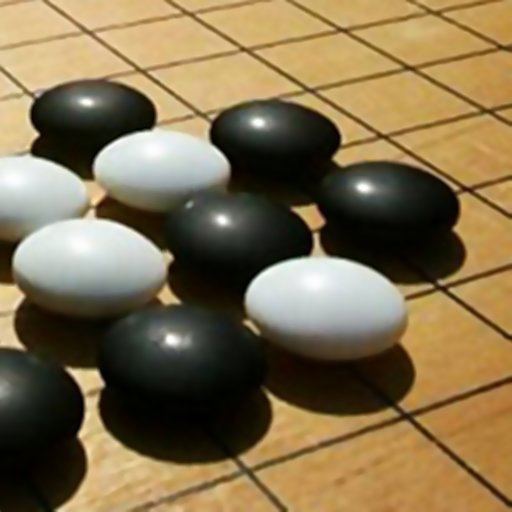 | ||
Go tactics deal with immediate fighting between stones, capturing and saving stones, life, death and other issues localized to a specific part of the board. Larger issues, not limited to only part of the board, are referred to as strategy, and are covered in their own article.
Contents
Capturing tactics
There are several tactical constructs aimed at capturing stones. These are among the first things a player learns after understanding the rules. Recognizing the possibility that stones can be captured using these techniques is an important step forward.
The most basic technique is the ladder. To capture stones in a ladder, a player uses a constant series of capture threats —called atari— to force the opponent into a zigzag pattern as shown in the adjacent diagram. Unless the pattern runs into stones along the way, the stones in the ladder cannot avoid capture. Experienced players will recognize the futility of continuing the pattern and will play elsewhere. The presence of a ladder on the board does give a player the option to play a stone in the path of the ladder, thereby threatening to rescue his stones, forcing a response. Such a move is called a ladder breaker and may be a powerful strategic move.
Another technique to capture stones is the so-called net, also known by its Japanese name, geta. This refers to a move that loosely surrounds some stones, preventing their escape in all directions. An example is given in the adjacent diagram. It is generally better to capture stones in a net than in a ladder, because a net does not depend on the condition that there are no opposing stones in the way, nor does it allow the opponent to play a strategic ladder breaker.
A third technique to capture stones is the snapback. In a snapback, a player sacrifices a stone in order to immediately capture several opposing stones, in effect snapping back those stones. An example can be seen on the right. As with the ladder, an experienced player will not play out such a sequence, recognizing the futility of capturing only to be captured back immediately.
Reading ahead
One of the most important skills required for strong tactical play is the ability to read ahead. Reading ahead consists of considering available moves to play, considering the possible responses to each move, the subsequent possibilities after each of those responses, etcetera. Some of the strongest players of the game can read up to 40 moves ahead even in complicated positions.
As explained in the section on important consequences of the basic rules, some formations of stones can never be captured and are said to be alive, while other stones may be in the position where they cannot avoid being captured and are said to be dead. Much of the practice material available to students of the game comes in the form of life and death problems, also known as tsumego. In such problems, players are challenged to find the vital move sequence that will kill a group of the opponent or save a group of their own. Tsumego are considered an excellent way to train a player's ability at reading ahead, and are available for all skill levels, some posing a challenge even to top players.
Ko fighting
In situations where the ko rule applies, prohibiting a player to capture to avoid repetition, a ko fight may occur. If the player who is prohibited from capture is of the opinion that the capture is important, for example because it prevents a large group of stones from being captured, the player may play a ko threat. This is a move elsewhere on the board that threatens to make a large profit if the opponent does not respond. If the opponent does respond to the ko threat, the situation on the board has changed, and the prohibition on capturing the ko no longer applies. Thus the player who made the ko threat may now recapture the ko. His opponent is then in the same situation, and can either play a ko threat as well, or concede the ko by simply playing elsewhere. If a player concedes the ko, either because he does not think it important, or because there are no moves left that could function as a ko threat, he has lost the ko, and his opponent may connect the ko.
Instead of responding to a ko threat, a player may also choose to ignore the threat and connect the ko. He thereby wins the ko, but at a cost. The choice of when to respond to a threat and when to ignore it is a subtle one, which requires a player to consider many factors, including how much is gained by connecting, how much is lost by not responding, how many possible ko threats both players have remaining, what the optimal order of playing them is, and what the size — points lost or gained — of each of the remaining threats is.
Frequently, the winner of the ko fight does not connect the ko but instead captures one of the chains which constituted his opponent's side of the ko. In some cases, this leads to another ko fight at a neighboring location.
